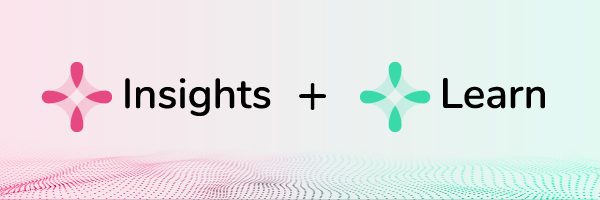What is the Best Way To Onboard a New Hire?
Posted by Noel • March 25, 2022 (Last modified June 8, 2023) • 7 min read
Human resources leaders talk about onboarding more than they talk about almost anything else these days. Why? It’s because they are doing more hiring than they’ve ever done, and they are starting to see that they need to change the way they onboard a new hire to make an impact.
What is the best way to onboard a new hire? There’s a lot of debate, discussion, and even some controversy when it comes to onboarding someone new. Smart businesses know that the way an employee starts at your company can dictate how they will perform, how long it takes them to be impactful, and even how long they will stay employed.
Building a fantastic onboarding program is imperative for people who want to build lasting relationships with their workers. It can also help to alleviate some of those “first-day jitters” that many new employees have.
Ready to build an onboarding program that leads to more success? Be sure to download our onboarding checklist to start with great bones.
Invest Time In Onboarding New Employees
Employees are an important part of your success as a company, so you need to make that initial investment in them. Think about it this way: you’ve already invested time in them. You had an opening, whether through attrition or expansion, so you posted a job opening. You took the time and resources to interview and hire them. Don’t let your investment stop there. Instead, use the information you gathered from everyone during that interview process to build a better onboarding experience for them individually.
Do you have to build a new onboarding process for every employee who enters your company? No! The best thing you can do is start with good bones and then personalize it from there to suit the needs of the person, position, department, or company. You can go back to this formula when you have limited bandwidth or just to give you somewhere to start.
What To Do Next: Employee Onboarding Checklist
If you are worried about employee turnover, you aren’t alone. It is one of the hardest times to be an employer right now because people are leaving jobs without a second thought. Onboarding is a great way to keep employee churn low.
The first few days and weeks you have a new hire, you need to set the expectations and build their investment in your company. They need to care about the same things you care about, work towards the same goals you’re working towards, and see that you are investing in them.
Starting off on the right foot will help you do all of that and more. If you overlook onboarding and just push your new hire onto an employee trainer, they could feel like they are floundering. They may leave right away (after all, they have been interviewing, so they might get another offer in the coming days or weeks) or they may build bad habits that could impact their performance.
So, what is the best way to onboard a new hire? Here are five simple steps you can take:
Start By Building Cover-all Training
First, you want to start by building content-rich cover-all training that is a simple, but thorough, overview of your business. This is the type of training that all employees need to go through. Some examples of cover-all training include:
- Security Training
- Employee Code of Ethics Training
- Diversity Training
- Software Training
- Product Training
- Persona Training
- Measurement Training
- Organizational Structure Training
Although developing this training may take you some time right now, you will only have to do it once and then update it whenever there is something new. With software like the Trakstar Platform, you won’t even have to enroll new hires individually – as soon as they are hired, they will get enrolled automatically.
Set Goals – And Create A Plan To Review Them
When you hire a new employee, you have goals in mind for them. There is a specific need for their skills or expertise. During the onboarding process, you should tell your new hires what those goals are and then give them the tools to get there. By identifying goals, some that are easier to attain and others that are more difficult, you will be defining success for them and giving them the energy they need to make a real impact.
Be sure that your onboarding materials support the goals you set for your new hire. Introduce them to the people who can help them achieve those goals, set out a plan to get there, and then schedule a performance review to ensure the goal is achieved. You should set up performance review s right away during the onboarding process to ensure that your new hires know when they are, can ask any questions about them, and start thinking about how to succeed.
Set Up One-On-One Time With All Important Players
Another thing you want to do is set up one-on-one time with the people that matter to this particular employee, this role, or within the company. Even just setting up a 10 minute meeting with the new employee can help them to feel engaged and connected.
If you really want to go the extra mile, you can set up meetings for the first few months of a new hire’s tenure at your company to keep them engaged. This helps employees form relationships and want to work together on projects.
If you have employees that work remotely, there are other ways you can help them meet other people. Set up video meetings or conference calls on a routine basis. There are even different tools you can use to form random groups that meet up.
The goal is to keep your employees engaged. This starts when you first welcome them to your company and then it continues on with routine check-ins, meetings, and fun events. Don’t forget your remote employees. They need to meet each and every new team member as well.
Give Them Access Before They Start
Nothing looks worse than a company that isn’t prepared for an employee’s first day. You need to get yourself organized before they start. Ideally, you should be ready with some materials when they are ready to sign a contract. Part of the employee onboarding process almost always requires them having access to specific things.
Start by getting them all of the materials they need. This could include office equipment, supplies, log-in information, space, emails, and more. You want to ensure that they don’t have to ask you for too many things or they will feel like an afterthought. The goal is to show them that you put thought and care into their first day or week.
Of course, you want to be careful about security – don’t give them access to sensitive information until they’ve had security training. Successful onboarding requires you to think about everything ahead of time, and access is important.
Consider Other Training Materials
Often, HR leaders will design courses and materials surrounding job responsibilities, organizational policies, and how to use tools. However, they don’t think about making unique training courses that are outside of the ordinary. For example, maybe you want to make a training course on the different restaurants within walking distance from the office. Maybe you get asked the same things over and over again by employees new and old. Maybe you have unspoken rules or inside jokes that new hires need to know about. Consider putting these into training courses on your onboarding schedule.
Why? Not only does it help the new employee feel at home during the first few days they are employed, it helps them to take some breathing time during an onslaught of information. Onboard new hires using materials of various types to help reach employees who may learn in different ways.
What Is The Best Way To Onboard A New Hire?
If you are looking for the best way to onboard a new hire, it starts with two things:
- A good, repeatable onboarding process that you can follow regardless of position
- Training materials you can count on (and quantify!)
From there, you can personalize the training and make it unique to the role, hiring class, or time of the year.
For more help hiring, onboarding, training, and reviewing your employees, the Trakstar Platform is the best-in-breed solution for many of your HR needs. In particular, many use Trakstar Learn as their employee onboarding software to build better training courses that allow for virtual onboarding, remote hires, and existing employees.
Schedule a demo today to see just how it will help you make the connections, automate the busy-work, and cut through the noise to make a positive impact on your workforce.
Don't Miss Out on More Great HR Articles!
Subscribe to get the latest, greatest HR and Talent Development content straight to your inbox.


